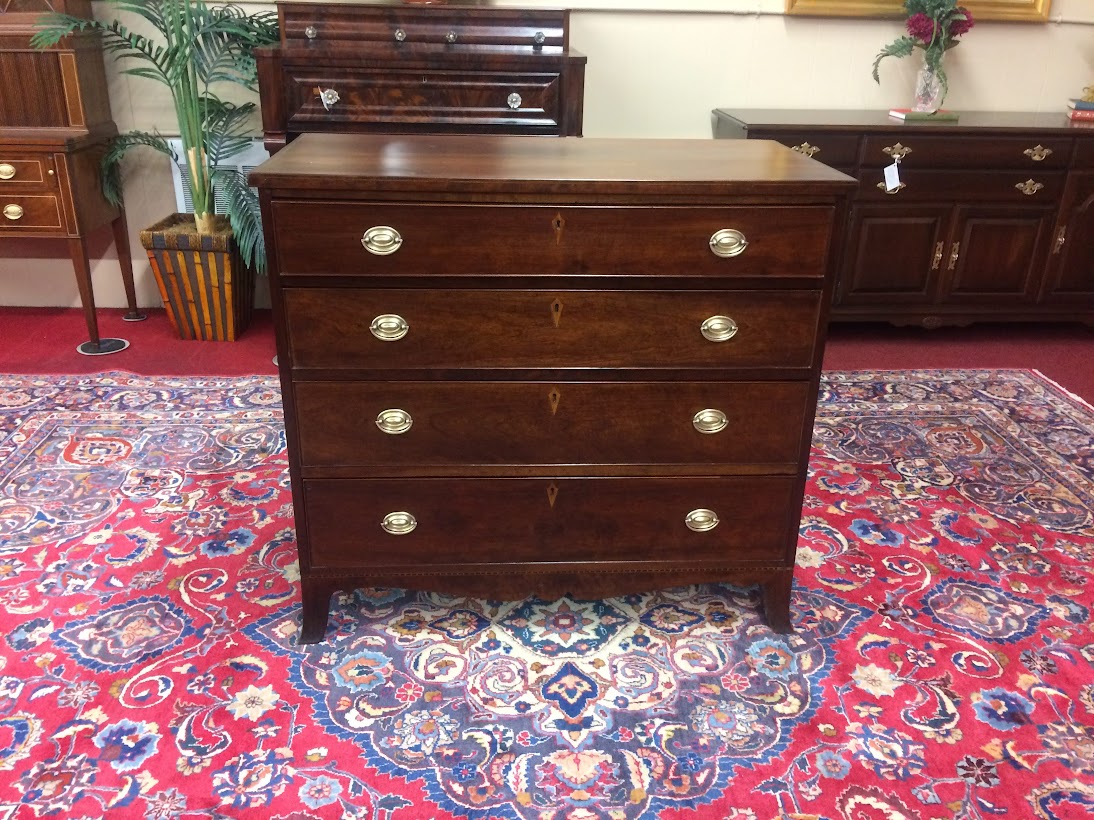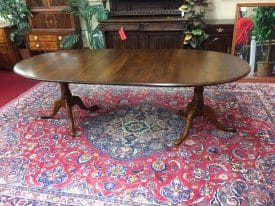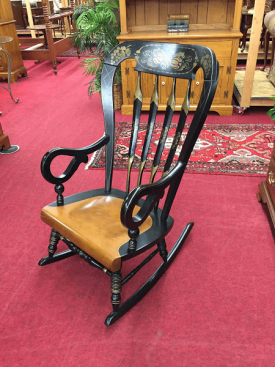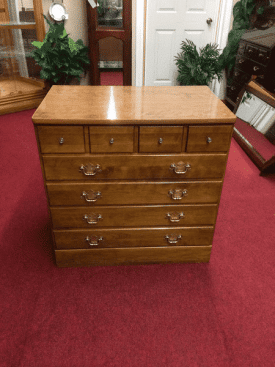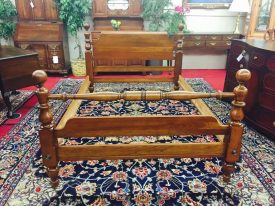Beautiful antique chest of drawers with lovely inlaid detail. This old dresser has such a pretty look and shows great quality.
Antique Chest of Drawers
Likely, this antique chest of drawers came from the Mid Atlantic region of the US, and dates to circa 1840. Much of the chest has been worked on over the years, including some repairs to the bottom, drawer bottoms etc. Additionally, it appears that the hardware may have been replaced at a certain point as well. Although, it does have solid brass hardware.
Despite these adjustments, the antique chest of drawers has a really pretty look. It has nice inlay along the bottom. Also, it has inlay around the escutcheons.
Inlaid Dresser
We refinished this inlaid dresser in order to restore the finish.
An antique chest of drawers with inlaid design can be a beautiful and valuable piece of furniture. Here are some factors to consider when evaluating its worth:
- Material: Assess the material used in the construction of the chest of drawers. Antique pieces are often made from solid wood such as mahogany, walnut, or oak, which tends to be more valuable than veneers or composite materials.
- Inlay Work: Examine the quality and intricacy of the inlaid design. Inlaid decoration involves embedding contrasting materials into the surface of the wood to create decorative patterns or images. Fine craftsmanship and elaborate designs can significantly enhance the value of the chest of drawers.
- Construction and Condition: Inspect the overall construction of the chest of drawers, including the joinery, drawers, and any hardware. Look for signs of wear, damage, or repairs, as well as the overall condition of the piece. Antique furniture in good condition, with original finishes and minimal restoration, tends to be more valuable.
- Style and Design: Consider the style and design of the chest of drawers. Antique pieces often reflect the design trends of their time, such as Georgian, Victorian, or Edwardian styles. Evaluate the proportions, silhouette, and decorative elements of the piece to determine its aesthetic appeal and historical significance.
- Age: The age of the chest of drawers can impact its value, with older pieces often commanding higher prices. Look for signs of age, such as patina, wear, or evidence of restoration, to help determine the piece’s age and authenticity.
- Provenance: Any documented history or provenance associated with the chest of drawers, such as previous owners, makers, or notable collections, can increase its value. Researching the piece’s provenance can provide insights into its history and significance.
- Market Demand: The current demand for antique furniture, particularly pieces with inlaid decoration, can influence their market value. Research recent sales of similar items to gauge market trends and pricing.
- Local Market: Consider local market factors such as regional preferences and availability. Consulting with local antique dealers or furniture experts may provide insights specific to your area.
To determine the value of your antique chest of drawers with inlaid design, consider consulting with antique furniture experts, appraisers, or dealers specializing in antique furniture. They can provide insights based on the specific details, condition, and market demand for your piece. Additionally, researching recent sales of similar items through auction houses or online marketplaces can help determine its market value.

